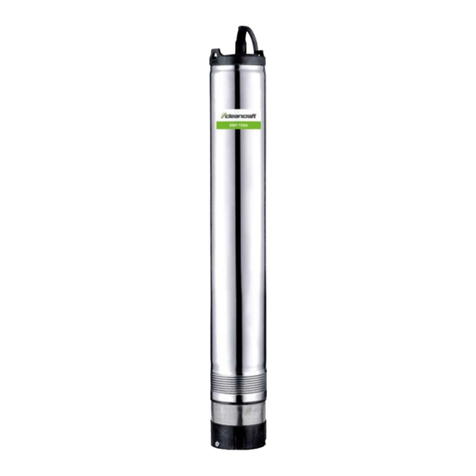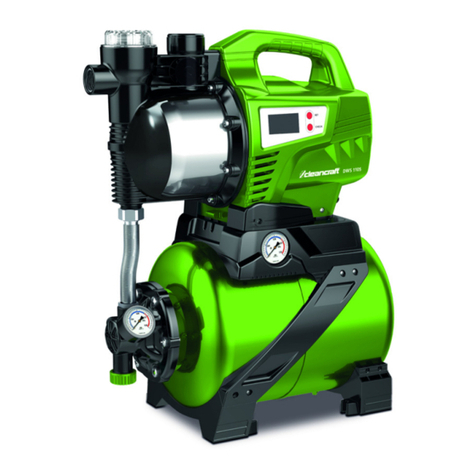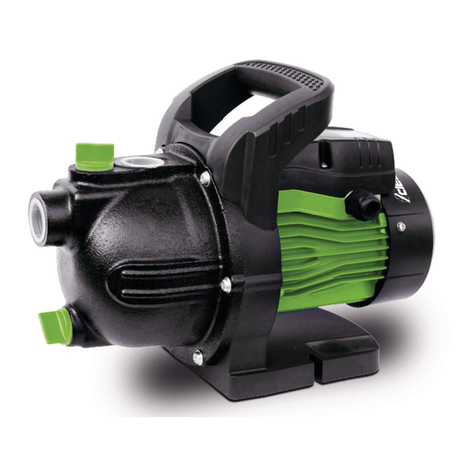
imprint contents
1 Introduction ....................................... 3 1.1
Copyright.................................................. ....... 3 1.2
Customer service........................................ ............ 3
1.3 Limitation of liability................................. .... 3 2
Security.......................................... ...... 3 2.1 Explanation
of symbols........................................ ........ 3 2.2
Responsibility of the operator ........................ 4 2.3
Qualification of the personnel ......... ............................
5 2.4 Personal protective equipment .................. .........
5 2.5 General safety instructions ........................ 5 2.6
Safety marking on the water pump .. 7 3 Intended
use ...... 7 3.1 Misuse........................................ ............. 7
3.2 Residual risks................................. ........................
7
5 Transport, packaging, storage........ 8 5.1
Delivery................................. ....................... 8 5.2
Transportation ........................ .......................................
8 5.3 Packaging........ ..................................... 9 5.4
Storage................................................. ............ 9 6
Description .................................... ..... 10 7 Scope of
delivery ........................................ 11 8 Controls and
Functions ........ 11
9 Commissioning ..................................... 12
Repair ..................................................... 17 10.1
Care by Cleaning ..................................... 17 10.2
Maintenance and repair/repair ........ 18 10.3
Maintenance intervals........................................ 19
10.4 Oil change . .................................................. ....
20 10.5 Cleaning the air filter ........................................ ...
20 10.6 Replacing the spark plug.......................................
21 10.7 Spark arrestor ( Optional).................................
21 10.8 Draining the fuel tank and carburettor....22
Old devices ................................................ 22 11.1
Decommissioning ..................................... 22 11.2
Disposal of electrical devices ........ .... 22 11.3 Disposal
of lubricants........................ 22
12 Malfunctions, possible causes and
13 Spare parts ........................................ 24
14 EU Declaration of Conformity ................ 31
4 Specifications ..................................... 8
10 Care, maintenance and repair/
Measures ....................................... 23
11 Disposal, recycling of
Internet:
Edition: 08/27/2020 Version:
1.05 Language: German
FL/MS
item number
product identification
E-mail: 0049 (0) 951 96555 - 55
www.cleancraft.de
fresh water pump
Fax:
9.1 Operation ..................................... .............. 14 9.2 Placement
of the pump ........................ ...... 14 9.3 Installing the suction
hose ........................ 15 9.4 Installing the drain hose ........ ....... 15
9.5 Filling the pump with water................................. 15 9.6 Starting
of the engine ..................................... 16 9.7 Stopping the
engine .......................................... 17
The contents of these operating instructions are the sole property
of Stürmer Maschinen GmbH.
FWP Series | Version 1.05
2
Stuermer Maschinen GmbH Dr.-
Robert-Pfleger-Str. 26 D-96103
Hallstadt
Original operating instructions
Copyright © 2020 Stürmer Maschinen GmbH, Hallstadt, Germany.
Technical changes and errors reserved.
Manufacturer
Information on the operating instructions
copyright
13.1 Ordering spare parts........................................ 24 13.2 Spare
parts drawings FWP 50 and 80 ........... 25 13.3 Spare parts
drawings FWP 80....................... 28
7500050
7500080FWP 80
4.1 Table................................................ ................ 8 4.2
Nameplate ................................ ......................... 8th
Author:
Passing on and duplicating this document, using and communicating
its contents are prohibited unless expressly permitted. Violations
oblige to compensation.
FWP 50
Machine Translated by Google



























